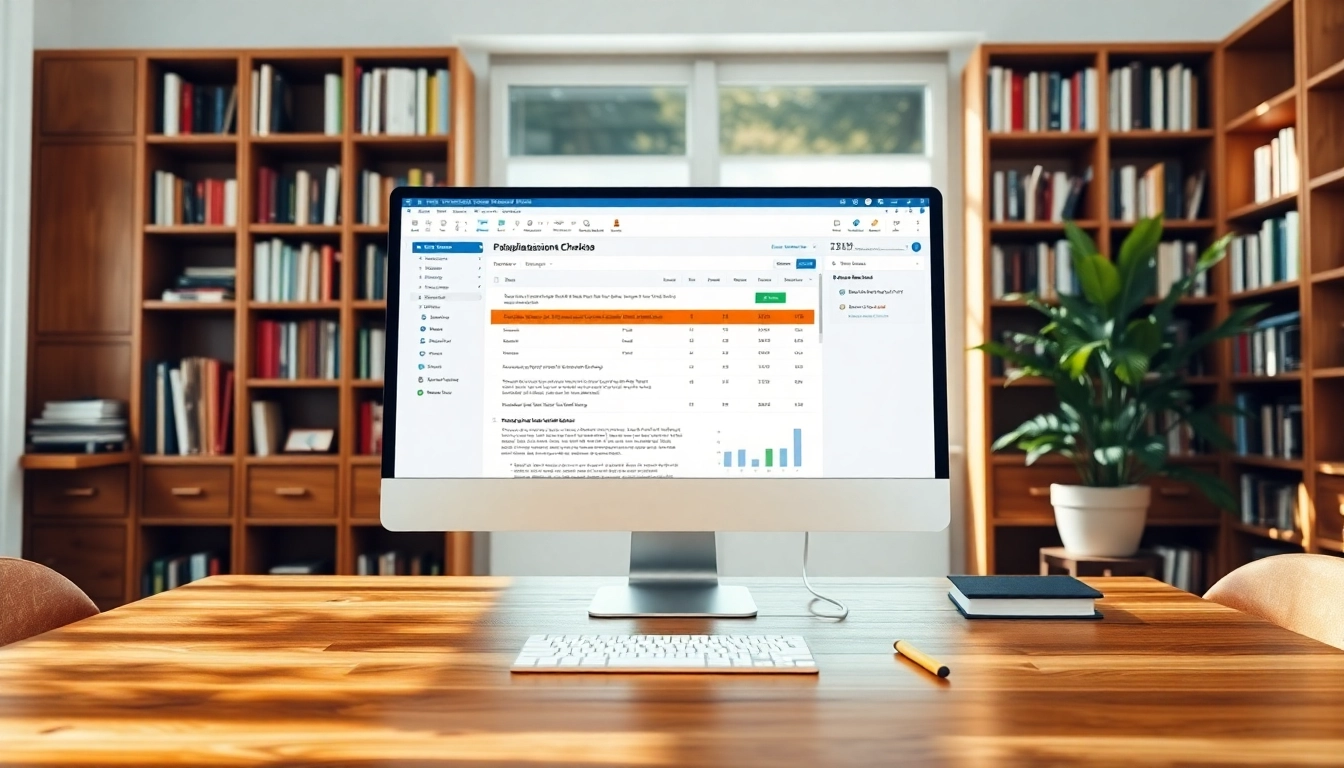Understanding Plagiarism: Types and Consequences
What is Plagiarism?
Plagiarism is the act of using someone else’s ideas, words, or work without proper acknowledgment, portraying them as one’s own. This unethical practice is prevalent across various fields, particularly in academia and professional writing. Defined broadly, plagiarism encompasses not only direct copying but also paraphrasing ideas without credit, self-plagiarism, and the unauthorized use of others’ data or research findings. Understanding this concept is essential for maintaining integrity in your work and learning the distinction between acceptable use and infringement.
Common Types of Plagiarism
It is crucial to recognize the different forms that plagiarism can take. Below are some of the most common types:
- Direct Plagiarism: This involves copying text word-for-word from a source without providing citation.
- Self-Plagiarism: Reusing one’s own previously published work without acknowledgement, often seen in academic submissions.
- Patchwork Plagiarism: This occurs when multiple sources are stitched together into a new piece of work without proper citation.
- Paraphrasing Plagiarism: Rewriting someone else’s ideas without crediting the original source, even if words are changed.
- Accidental Plagiarism: Often occurs when someone forgets to cite their sources or misquotes them, leading to unintentional copying.
Academic and Legal Implications
The consequences of plagiarism extend far beyond ethics. In the academic realm, students may face severe penalties such as failing grades, academic probation, or expulsion from educational institutions. Legally, plagiarism can lead to lawsuits and financial repercussions, especially when it involves copyright infringement. Recognizing the seriousness of these implications is paramount for anyone involved in writing or research. Institutions often utilize plagiarism checkers to enforce original work, making it easier to detect and prevent these violations.
How a Plagiarism Checker Works
Technology Behind Plagiarism Detection
Plagiarism checkers leverage advanced algorithms and vast databases to discern potential instances of copied content. Most utilize a combination of various techniques, including:
- Text Matching: This technique compares submitted content against large databases of existing text to identify similarities.
- Fingerprinting: By creating a unique “fingerprint” of each document, these tools can detect rephrased ideas or sections, even if the words are altered.
- Machine Learning: Some of the most sophisticated tools employ AI to learn patterns in writing, improving their ability to detect more nuanced forms of plagiarism over time.
Accuracy and Reliability of Results
While many plagiarism checkers offer decent results, the accuracy can vary. Factors influencing reliability include the breadth of their database, the sophistication of their algorithms, and how they define duplicate content. It’s essential for users to understand that no tool is perfect; cross-checking results with additional resources and manual assessments can ensure a higher reliability level.
Features of Advanced Plagiarism Checkers
Modern plagiarism detection tools come with several features that enhance user experience and provide deeper insights. Some notable features include:
- Multiple File Format Support: The ability to check documents in various formats (PDF, DOCX, TXT) increases usability.
- AI Integration: Utilizes artificial intelligence to enhance detection capabilities, uncovering complex forms of plagiarism.
- Real-Time Scanning: Instant results that allow users to edit and re-submit for continuous checks.
- Report Generation: Well-structured reports highlighting sources of plagiarism and percentage scores to quantify originality.
Choosing the Right Plagiarism Checker
Popular Plagiarism Checker Tools Review
There are numerous plagiarism checkers available today, each with unique strengths. Here’s a review of some popular ones:
- Grammarly: Renowned for its extensive writing assistance features, Grammarly also provides a robust plagiarism checking tool that scans texts against billions of web pages.
- PapersOwl: Targeted towards students, this free plagiarism checker is recognized for delivering accurate and detailed reports on copied content.
- Scribbr: Offering a plagiarism checker with algorithms similar to those used by universities, Scribbr is effective for academic purposes.
- Copyscape: Ideal for web content, Copyscape is excellent for bloggers and businesses looking to ensure originality across online platforms.
Criteria for Selecting the Best Tool
When evaluating plagiarism checkers, consider the following criteria:
- Database Coverage: A wider database ensures better detection of plagiarized content.
- Speed: The time taken to deliver results can significantly impact workflow, especially for professionals on tight deadlines.
- Cost: Balance between affordability and functionality; some highly sophisticated tools may come with a premium price tag.
- User Feedback: Reviews and ratings from other users can provide insight into the effectiveness of the tool.
Free vs. Paid Plagiarism Checkers
Choosing between free and paid plagiarism checkers can depend on the user’s needs. Free tools are accessible but often have limitations, such as database size and the depth of analysis. On the other hand, paid checkers typically offer comprehensive features, accuracy, and customer support. Depending on the importance of the task at hand, such as academic submissions or professional publication, investing in a paid service may yield worthwhile returns in integrity and quality assurance. Users should assess their specific requirements before making a commitment.
Tips for Avoiding Plagiarism in Your Writing
Effective Paraphrasing Techniques
Paraphrasing is an essential skill in academic and professional writing. Here are tips to paraphrase effectively:
- Understand the Original Text: Read the material thoroughly to grasp the underlying concepts before attempting to rewrite.
- Use Synonyms: Replace words with their synonyms, but ensure the replacements fit the context.
- Change Sentence Structure: Alter sentence structure; for instance, switch from passive to active voice or vice versa.
- Summarize Main Ideas: Focus on summarizing the core ideas without reproducing the sentence structure of the source.
Citation Best Practices
Proper citation practices are pivotal in academic writing. Follow these best practices:
- Use a Consistent Formatting Style: Choose a formatting style (APA, MLA, Chicago, etc.) and adhere to it throughout your document.
- Keep Track of Sources: Maintain an organized list of all sources you consult throughout your research process for easy reference.
- Direct Quotes: When using direct quotes, ensure they are cited correctly and integrated smoothly into your writing.
- Update Your Citations: Review citations for accuracy as your work evolves, ensuring each source is properly credited.
Utilizing Writing Assistance Tools
Leverage writing assistance tools that help improve writing quality and integrity. Tools such as grammar checkers, structured outlines, and citation generators can significantly enhance your writing process, ensuring originality and reducing the risk of unintentional plagiarism.
Evaluating Your Work with the Plagiarism Checker
Interpreting Plagiarism Reports
Once you run a plagiarism check, interpreting the report is crucial for understanding your work’s integrity. Key areas to focus on include:
- Overall Score: Most tools provide an originality score, indicating the percentage of unique content in your document.
- Highlighted Sections: Review highlighted sections to determine what needs modification or proper citation.
- Source Links: Follow links to the sources that are flagged for potential plagiarism to assess the validity carefully.
Improving Your Writing Based on Feedback
The ultimate goal of using a plagiarism checker is to refine your writing quality. Use the insights gained to enhance your originality, apply better writing techniques, and correct any detected issues. Continuous improvement should be the focus as you integrate the feedback into your future work.
Maintaining Academic Integrity
Maintaining academic integrity is essential not only for avoiding penalties but for fostering a culture of respect and honesty within the academic environment. Upholding this integrity entails a commitment to original work, adherence to ethical standards in writing, and promoting personal accountability. Regular use of a plagiarism checker can serve as a preventative measure, helping to reinforce these principles in all writing endeavors.



